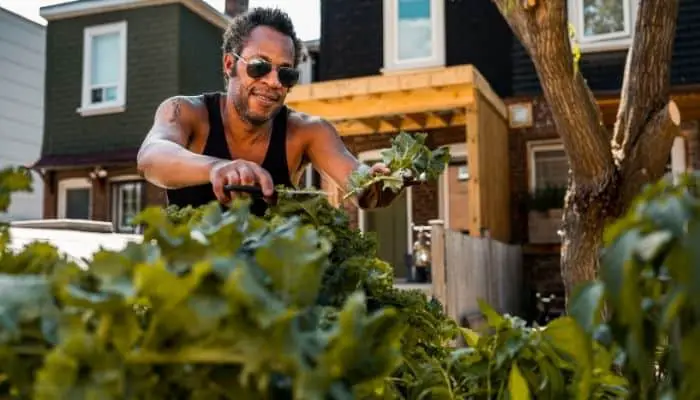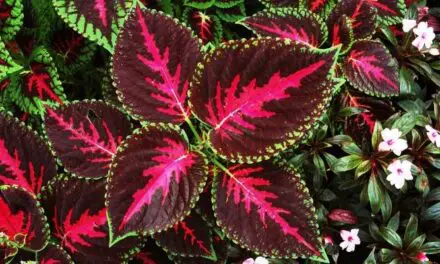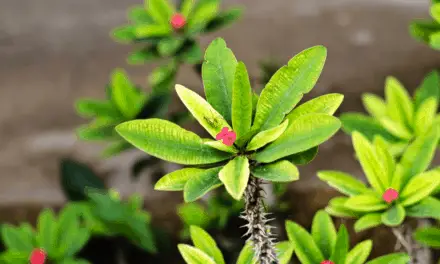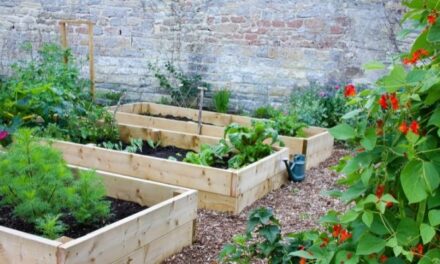Growing your own vegetables can be extremely satisfying, and as long as you have a bit of outdoor space, you will be able to grow a few different things!
If you only have a small yard at the side of your house, you may have to get a bit crafty, but you can still create a small vegetable garden.
Table of Contents
Can I Plant A Vegetable Garden Next to My House?

Yes, you can plant a vegetable garden next to your house as long as it receives at least 3 hours of sunlight each day.
But there are a few factors that may affect the placement of the garden.
Soil Quality
Traces of lead and other heavy metals can sometimes be higher around the drip zone of your house and your vegetables will take these up from the soil.
Also, If any termite treatment was used on or near the house, the soil around your foundation may contain high levels of chlordane or other harsh chemicals which stay in the soil.
If you are planting your vegetable garden right next to a brick and mortar wall you may get a transfer of PH from the mortar to your vegetables.
This shouldn’t be a major cause for concern but some veggies, like carrots and garlic, are more PH-sensitive than others.
Definitely test the soil before you plant a vegetable garden at the side of your house.
And if needs be you can even out the sign before you go ahead with it.
Also Read: Is Growing Vegetables Near Trees a Good Idea?
Shade
You will want to make sure that your vegetable garden is not too close to your house, because your house will cast a shadow.
Some vegetables do well in the shade, but others require many hours a day of full sun to thrive.
Try planting your garden about 10 feet away from your house so that it has the chance to get adequate sun during the day.
Heat
If you have a vegetable garden right up next to your house, it will likely stay warmer than having it several feet away from your house.
Your house is a thermal mass and will therefore keep your garden warmer.
This can be good during cooler months but can be a problem in the summer heat.
In the summer, your garden may dry out if it is right up next to your house.
You will need to pay special attention to the moisture level of the soil and may have to water more often than you would if the garden was located elsewhere.
You could even choose to mulch your garden to help it retain moisture.
What If There Is Too Much Shade?
Not everyone is blessed with a large, sunny yard.
Fear not – if you only have a small side yard that is shady most of the day, you can definitely still have a garden.
As long as your yard gets at least 3 hours of sun per day, you can grow many things.
The Best Vegetables For Shade
Herbs
Many herbs will do well with as little as three hours of sun per day.
These varieties include:
- Cilantro.
- Chives.
- Mint.
- Lemon balm.
- Parsley.
- Oregano.
All of these herbs will really brighten up your meals and are a great start to a garden!
Spinach
Spinach is fabulous for shady yards because it does much better in cool weather than in the heat.
Spinach needs about 3-4 hours of sun per day, and the rest of the day it will grow happily in the shade.
Spinach actually tends to bolt when the weather becomes hot, so keeping it in the shade may actually help to hold off bolting a little longer.
Mustard greens
Mustard greens are another great vegetable for shady yards.
Like spinach, they need about 3-4 hours a day.
Shade is really your friend when it comes to mustard greens.
In the full heat of the sun, mustard greens can become really strong, but left in the shade they stay only delicately spicy making them perfect for salads.
Kale
Kale is another vegetable that only requires 3-4 hours of sun per day.
The kale plants may not grow as large as they would in full sun, but they will still do really well in the shade.
Mesclun
Mesclun mix is a popular salad mix that is comprised of baby leaves.
This is perfect for a shady garden because the leaves only need about 2-3 hours of sun and can be harvested after about 4 weeks.
Green onions
Green onions do well with about 3 hours of sun per day.
A great tip for green onions is to save the root and about an inch of the onion from the store and plant them.
The green onion will grow continuously, and every time you want some green onions you can just cut them, leaving an inch or so in the soil and they will grow back!
Where Is The Best Spot For A Vegetable Garden?
Everybody’s yard is different so you’ll have to analyze exactly where the best spot is for your patch is but, in general, you should plant vegetables in a location that gets at least six hours of sunlight per day, has loose, rich, well-drained soil, is free from weeds and has decent air circulation.
Final Thoughts
You can have a garden just about anywhere, even right next to your house.
You just may have to be a little choosy about what you plant.
If your only option is to have your garden right up alongside your house in the house’s shadow, you can still have a productive garden if you choose the right vegetables!




